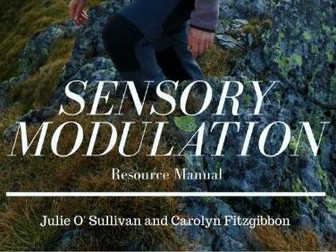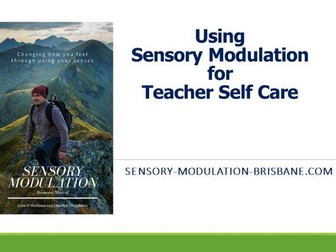
Sensory Modulation Resource Manual Ebook
Sensory Modulation is an evidence based intervention supporting children and teenagers to develop effective skills to manage stress, intense emotions and challenging life events. It works by using sensory input to change the physiology of the body, and in doing so creates a positive shift in feelings. The senses used include sight, sound, smell, taste, touch, deep pressure and movement.
Schools, youth services, hospitals, health and community services who have adopted sensory modulation have shown reduced stress levels, enhanced well being and improved functional outcomes for their students and service users.
Sensory modulation is proven to help young people to:
• feel more grounded when spacey, zoned out or having difficulty focusing
• self soothe when feeling self-hatred, shame, sadness or coping with loss
• calm down when feeling anxious, scared, angry or restless
• relax when feeling physically uptight or mentally stressed
• feel more alert when tired, lethargic, or having trouble concentrating
• increase feelings of safety and security when afraid or troubled by distressing worries or unpleasant memories
• self manage specific symptoms including pain, panic or inability to sleep
• increase positive feelings in the moment when feeling sad or worried
• use alternatives to acting out or hurting themselves when very distressed
Sensory modulation works quickly and effectively to change feelings. Research shows that body based interventions directly targeting these brain centres (like sensory modulation) are more effective for young people:
• in emotional distress
• who have experienced traumatic life events
• who have cognitive difficulties
The Sensory Modulation Resource Manual was written by Occupational Therapists Carolyn Fitzgibbon and Julie O’Sullivan, to assist those working with young people to use sensory modulation in their day to day lives. Practical information with respect to the young person, the activities they engage in, and their environment is provided. The sensory modulation strategies suggested in the manual are effective because they are safe, appropriate, individualised and meaningful to the young person.
The Sensory Modulation Resource Manual explores concepts and offers a range of interventions suitable for working with children and teenagers, including:
• Understanding the 8 senses and how sensory modulation works
• Creating sensory spaces, sensory rooms and sensory playground zones for schools, home and community centres
• Developing sensory kits and applying sensory modulation in daily routines
It provides helpful strategies to successfully integrate sensory modulation into everyday life. Downloadable resources such as worksheets and factsheets are available to support understanding and embed the concepts and techniques.



